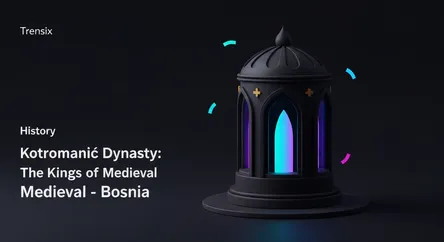History
Kotromanić Dynasty: The Kings of Medieval Bosnia

Explore the Kotromanić dynasty, the medieval royal house that forged the powerful Kingdom of Bosnia and shaped the history of the Balkans.
What is it?
The Kotromanić dynasty was the ruling royal house of medieval Bosnia from the 13th century until the Ottoman conquest in 1463. Initially ruling as bans (provincial governors) under Hungarian influence, they expanded their territory and influence significantly. The dynasty reached its zenith under Tvrtko I, who crowned himself the first King of Bosnia in 1377, establishing a powerful kingdom that encompassed parts of modern-day Croatia, Serbia, and Montenegro. The Kotromanić rulers navigated complex political and religious landscapes, including the presence of the distinct Bosnian Church. Their reign marked a period of political sovereignty, economic growth through mining and trade, and cultural development for Bosnia.
Why is it trending?
Interest in the Kotromanić dynasty is rising due to a growing focus on the medieval history of the Balkans and the formation of national identities. The dynasty represents a golden age of Bosnian independence and power, making it a significant subject in regional historical discussions. Archaeological discoveries at royal sites like Bobovac continue to shed light on their rule and sophisticated courtly life. Furthermore, the story of the Kotromanićs, with its themes of state-building, religious diversity, and resistance against larger empires, resonates with contemporary interests in medieval politics and forgotten kingdoms.
How does it affect people?
The legacy of the Kotromanić dynasty is a cornerstone of Bosnian national heritage and identity. For many Bosnians, it symbolizes a period of historical greatness and sovereignty before centuries of foreign rule. Symbols associated with the dynasty, such as the lily (fleur-de-lis), have been adopted in modern contexts. The dynasty's history shapes the cultural landscape, influencing historical narratives, tourism, and national pride. The remains of their fortresses and royal mausoleums are important historical landmarks that connect people today with Bosnia's medieval past and its significant role in European history.